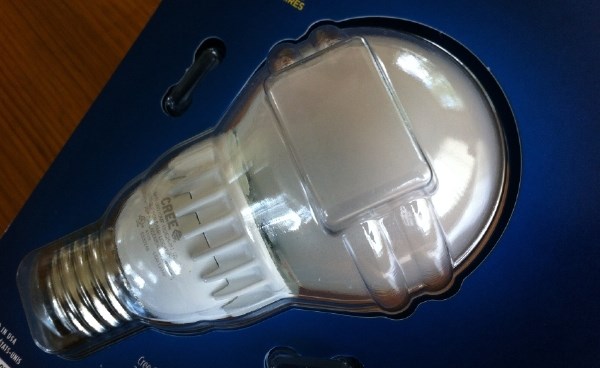
Prices for LED bulbs have dropped in the last year and quality has improved. Many models do a good job of mimicking the light and look of incandescent bulbs.
- - -
[Topic: LED light bulbs]
The first few rounds of energy efficient light bulbs gave them a really bad reputation. Those spiral ones — compact fluorescent lamps or CFLs — turned out to contain mercury, which is toxic if it leaks out of a broken bulb. They glowed with a sickly harsh hue. They were dim when first turned on, taking several minutes to come to full brightness. They didn’t like the cold. They burned out much faster than advertised; in my experience many lasted only as long as incandescents. When a couple of ours burned out prematurely, the glass spiral and the base turned an alarming grey and there was a slight odour. On top of all that, they hummed as they got older. Definitely not a good beginning for what was supposed to be a new, energy-saving era in lighting. Those spiral bulbs, I’m told, are better now. But after such a bad introduction, I’m reluctant to give them another try.
For a time, when the CFLs burned out, I switched back to incandescents. But I’m now moving to LED bulbs.
In the last year, LED bulbs have become an acceptable alternative, based on price and performance. The quality of the light, the most important thing, is pretty much on par with the beloved but highly inefficient incandescent; that’s especially true with LED bulbs that are rated as “warm” in the colour spectrum. Many LED bulb designs mimic the shape and colour of incandescents, so they don’t look weird in light fixtures.
Price has been a major barrier for LED bulbs. A couple of years ago, they were $40 and up per bulb. But in the last year, prices have dropped a lot. I’ve found LED bulbs at around $13 for a 6-watt unit, which is a replacement for a 40-watt incandescent, and $16 for a 9.5-watt, a replacement for a 60-watt incandescent. That’s still a lot of money, compared with around 75 cents for an incandescent. In theory, you will recover the difference, and more, by using significantly less energy, and by not having to repeatedly replace the bulbs. Some manufacturers are guaranteeing a 10-year-life for LEDs, based on “typical” usage.
The standard claims for LED bulbs are that they last 25 times as long as incandescents, and they use about 80 per cent less energy. That can translate into around $100 in energy savings during an LED bulb’s 25,000-hour lifespan.
LEDs turn on instantly, are dimmable, are supposed to work fine in the cold (I have not tested), do not make noise, do not contain mercury. They also use less energy than CFLs to provide the same illumination.
I can’t attest to the lifespan claims yet. The longest service for an LED bulb in our house is about a year at a high-use location in our kitchen where an incandescent would burn out roughly every six months.
- - -
Ballpark costs: $13 to $16 for a 40-watt equivalent LED bulb, $3 to $6 for a CFL, 50 to 75 cents for an incandescent.
- - -
Update: The U.S. website SweetHome.com has named the Cree Soft White the best LED light bulb. It's available from Home Depot.
- - -
The B.C. Sustainable Energy Association tackles myths about light bulbs. Compact fluorescent bulbs are defended.
- - -
The Vancouver Sun’s Stephen Hume wrote about the horror of compact fluorescent bulbs. He said his CFLs all failed within 12 months and points out that they are banned from the trash; when they die, they must go on an energy-wasting trip to an approved recycling depot.
- - -
A seller of LED bulbs, designrecycleinc.com, has a chart comparing the characteristics of LED, CFL and incandescent bulbs. LEDs are the clear winner in their view.
- - -
B.C. Hydro offers its take on the bulb situation. They are much more positive about CFLs than I am.
- - -
Federal government edicts are changing what bulbs can be sold; generally, the idea is to phase out less efficient bulbs.
Here are explanations from Natural Resources Canada, which I admit to not fully understanding.
Canada’s standard for efficient light bulbs
Frequently asked questions - efficient light bulbs
- - -
- - -
Most popular posts:
How to pronounce Ucluelet, Tsawwassen, and that outdoor gear place
How I like to make popcorn (cautiously) on a stovetop
Vancouver to Toronto by train: we are hours late and we shrug
- - -


